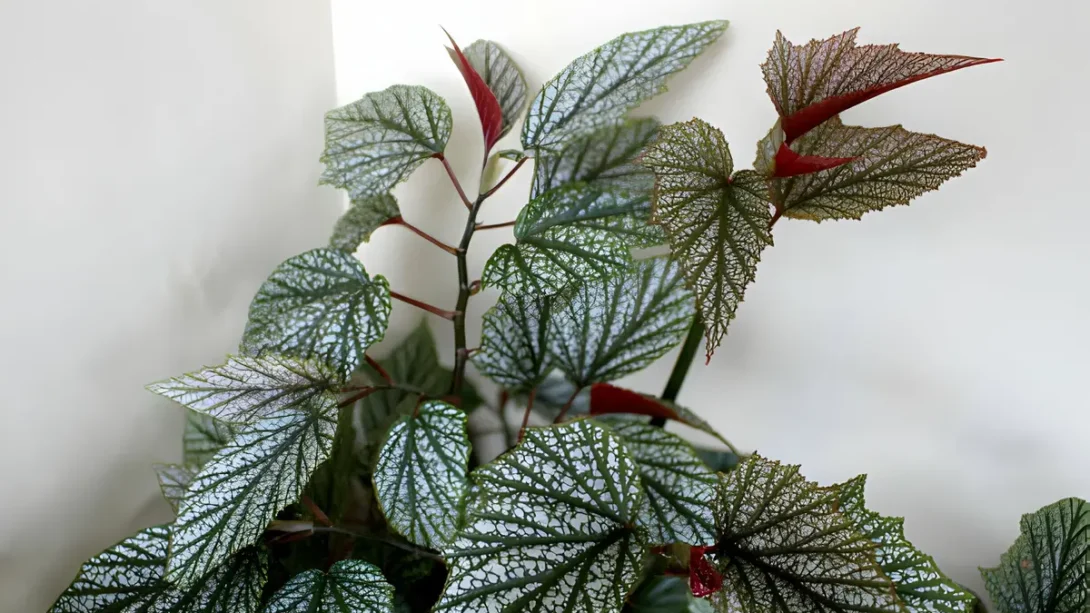The Angel Wing Begonia, with its stunning foliage and delicate flowers, is a favorite among indoor gardening enthusiasts. Known for its unique leaf shape that resembles angel wings and vibrant colors, this plant adds a touch of elegance to any space. Propagation not only allows gardeners to expand their collection but also offers a chance to share this beauty with friends and fellow plant lovers. This guide will walk you through the essential steps for propagating Angel Wing Begonia, ensuring a successful endeavor.
Angel Wing Begonia
Angel Wing Begonia, part of the Begoniaceae family, thrives in warm, humid environments similar to its native tropical regions. Its leaves are often speckled with silver dots and may have red undersides, contributing to its ornamental appeal. This plant is not only loved for its appearance but also for its relatively easy care requirements, making it suitable for gardeners of all levels.
Unlike some other begonia varieties that might prefer more specialized conditions or have different growth habits, Angel Wing Begonias are particularly amenable to propagation. Understanding the characteristics that distinguish it from other begonias can help ensure that your propagation efforts are tailored to its specific needs.
Preparation for Propagation
The best time to propagate Angel Wing Begonia is during the spring or early summer when the plant is in its active growth phase. This timing allows the new plants to establish themselves well before the slower winter growth period.
Before you begin, gather the following tools and materials:
- A pair of sharp scissors or pruning shears, cleaned and sterilized to prevent disease transmission.
- A high-quality, well-draining potting mix, suitable for begonias.
- Small pots or containers with drainage holes.
- Rooting hormone powder or gel (optional), to encourage root growth.
- A clear plastic bag or a propagation chamber, to maintain humidity around the cuttings.
Propagation Methods
Angel Wing Begonia can be propagated through stem cuttings or leaf cuttings. Both methods are effective, but stem cuttings are generally more straightforward and yield faster results.
Stem Cuttings Method
- Selecting Cuttings: Look for healthy, vigorous stems on your Angel Wing Begonia. Ideal cuttings should be about 4-6 inches long with at least two sets of leaves or leaf nodes.
- Cutting Process: Using your sterilized scissors or pruning shears, make a clean cut just below a leaf node. The node is where new roots are most likely to sprout, so its inclusion on the cutting is crucial.
- Rooting Hormone Application: Though not strictly necessary, applying a rooting hormone to the cut end of your stem can enhance root development. Dip the cut end into the rooting hormone powder or gel, shaking off any excess.
- Planting Stem Cuttings: Fill your small pots with the prepared potting mix. Make a hole in the center of the mix with a pencil or your finger, and insert the cutting about an inch deep, ensuring at least one node is buried. Gently firm the soil around the stem.
- Creating Humidity: To create a humid environment conducive to rooting, cover the pot with a clear plastic bag, making sure it does not touch the leaves, or place it in a propagation chamber. Keep the setup in bright, indirect light and at a warm temperature.
- Care During Rooting: Water the soil to keep it consistently moist but not soggy. Check the cuttings every few days to ensure the soil hasn’t dried out and to look for signs of root development. Typically, roots will begin to form in 2-4 weeks.
Leaf Cuttings Method
For those interested in exploring another propagation avenue, leaf cuttings offer an intriguing method to multiply Angel Wing Begonias. This approach can be particularly rewarding, though it may require a bit more patience compared to stem cuttings.
- Leaf Selection and Preparation: Choose a healthy, mature leaf from the parent plant. The leaf should be free of spots, blemishes, and signs of pests or diseases. Using sterilized scissors or a knife, cut the leaf from the plant, including the petiole (the stalk that attaches the leaf blade to the stem).
- Cutting and Rooting: With the leaf flat on a clean surface, make a series of shallow cuts on the underside of the leaf, across the main veins. This encourages rooting along these cuts. If you’re using rooting hormone, you can lightly dust the cut areas with it, though this step is optional.
- Planting Leaf Cuttings: Prepare a tray or pot filled with a moist, well-draining potting mix. Lay the leaf on the soil surface, cut side down, and gently press it into the mix. You can use toothpicks or small stakes to keep the leaf in contact with the soil if necessary.
- Care After Planting: Cover the tray or pot with a clear plastic bag or place it in a propagation chamber to maintain high humidity, just as you would for stem cuttings. Keep the setup in a location with bright, indirect light and ensure the soil remains moist but not waterlogged.
Leaf cuttings will slowly develop roots and shoots at the sites of the cuts made on the leaf veins. This process can take several weeks to a few months, so patience is crucial. Once new growth is evident, and the plants have developed a small root system, they can be gently separated and transplanted into individual pots.
Aftercare for Propagated Plants
Whether you’ve propagated your Angel Wing Begonia by stem or leaf cuttings, the care your new plants receive as they establish is critical to their long-term health and vitality.
- Transitioning Cuttings: Once your new begonias have developed a robust root system, begin to acclimate them to less humid conditions gradually. If you used a plastic bag to maintain humidity, start by making small holes in the bag to slowly introduce them to the ambient air, increasing the size and number of holes over a week before removing the bag entirely.
- Repotting: When your new plants have outgrown their initial pots—usually indicated by roots growing through the drainage holes—it’s time to repot them into larger containers. Choose pots that are only slightly larger than the current ones to avoid overwhelming the young plants with too much soil, which can retain excess moisture and lead to root rot.
- Long-term Care: Angel Wing Begonias prefer bright, indirect light, high humidity, and consistently moist soil. Avoid placing them in direct sunlight, which can scorch their delicate leaves. Regular feeding with a balanced, water-soluble fertilizer during the growing season will support their growth and flowering. Pruning older leaves and spent flowers will encourage bushier growth and more blooms.
Troubleshooting Common Propagation Issues
Even with careful attention to detail, you might encounter some challenges while propagating Angel Wing Begonias. Here are common issues and their solutions to help you navigate the propagation process successfully:
- Cuttings Not Rooting: Sometimes, stem or leaf cuttings take longer to root or don’t root at all. This can be due to several factors, including too low humidity, cold temperatures, or poor cutting health. Ensure your propagation environment is warm (around 70°F or 21°C), and maintain high humidity. Using a rooting hormone can also increase the chances of success.
- Rotting Cuttings: If your cuttings start to rot, they might be too wet or in a poorly ventilated environment. Overwatering is a common cause. Allow the soil to dry out slightly between waterings and ensure the plastic covering is not too tight, allowing some air circulation.
- Leaf Cuttings Wilting or Dying: This issue can arise from too much direct sunlight or low humidity. Keep leaf cuttings in bright, indirect light and maintain a humid environment, especially crucial in the early stages of rooting.
- Fungal Growth: A white or fuzzy mold might appear on the soil surface or the cuttings themselves, often due to excessive moisture. Improve air circulation around the plants, and reduce watering frequency. If mold persists, gently remove the affected area and apply a fungicide according to the product instructions.
Ensuring Successful Propagation
Here are additional tips to maximize your success in propagating Angel Wing Begonias:
- Consistent Monitoring: Regularly check on your cuttings for signs of growth, rooting, or potential problems. Early detection makes it easier to correct course and ensure the health of your new plants.
- Patience is Key: Propagation, especially from leaf cuttings, requires patience. Some cuttings may take several weeks to show signs of growth or rooting. Trust the process and give your plants the time they need to develop.
- Experiment with Methods: If one method of propagation doesn’t yield success, try another. Some gardeners find better results with stem cuttings, while others prefer the leaf-cutting approach. Each plant and growing environment is unique, so don’t hesitate to experiment.
Conclusion
Propagating Angel Wing Begonias offers a rewarding way to expand your indoor garden and share these beautiful plants with others. Whether you choose stem cuttings, leaf cuttings, or a combination of both, understanding the key steps and how to address common challenges will enhance your chances of success. Remember, the key to effective propagation lies in providing the right conditions—warmth, humidity, and patience. With time, your efforts will be rewarded with new Angel Wing Begonia plants that bring color, beauty, and a sense of achievement to your indoor gardening endeavors.




